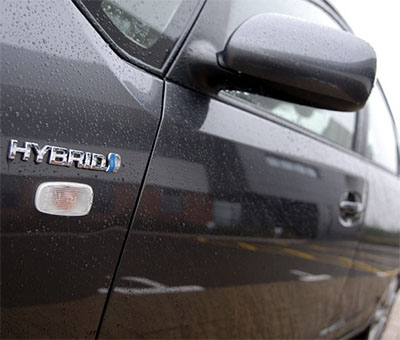WITHOUT SWIFT, EXPANSIVE CHANGES to the way humans currently tread on planet Earth, we will be dealing with the effects of climate change on a grand scale. Greenhouse gases — naturally occurring but increasing significantly due to human activity — from the burning of fossil fuels contribute to a warming climate that is wreaking havoc worldwide. Driving a car, heating your home and turning on the lights can all increase your carbon footprint, which has direct ties to climate change.
There are a slew of ways to reduce your carbon output, both at home and while traveling. Overall, reducing the energy you use can make a big difference, and steps like decreasing the amount of meat you eat, changing the type of light bulbs you use and choosing public transportation over driving a personal vehicle can all help lower your impact.
Let’s start with some home remedies. First, switch your light bulbs to LEDs, up to 80 percent more efficient than incandescent bulbs. You’ll reap the benefit of a lower electricity bill, and the bulbs last longer. Compact fluorescent lights, or CFLs, the spiral-shaped bulbs, have a similarly positive effect but are falling out of favor with consumers and becoming harder to find compared to LEDs.
The next time you buy a new appliance, whether it’s a refrigerator, washing machine, hot water heater or microwave, opt for new models that come with an Energy Star rating, awarded to products that prioritize energy efficiency.
Get smart with your thermostats. Consider lowering them by a degree or two in cold months and raising them slightly in warm months to cut back on energy use. Shut them off when you leave the house. Smart home devices, including thermostats, can help you monitor electricity usage via smartphone and help automate this process.
Wash your clothes in cold water, and line-dry them — both considerably lower your energy use.

© PHOTKA | DREAMSTIME.COM
Recycle and compost, whether through municipal programs or otherwise. The Environmental Protection Agency reports keeping products like glass, aluminum, plastic and paper out of the landfill can keep 582 pounds of carbon dioxide out of the atmosphere a year, equivalent to driving 600 fewer miles per year.
Installing solar panels at your home will not only lower your energy bills but, depending on where you live, trade nonrenewable energy for renewables. You may even be able to make some money by selling your excess electricity back to your local power company.
When you’re shopping for your next vehicle, consider buying a hybrid, electric or fuel-efficient car. Again, depending on where you live and what energy sources your grid taps into, you may be able to significantly lower your carbon footprint by forgoing your use of gas or lowering the amount you need to run your car. You can also maximize your fuel efficiency by keeping your tires properly inflated; ditching the extra stuff you keep in your trunk or backseat; and trading driving for walking, biking, carpooling and using public transit.
At the grocery store, buy less meat and opt for local, sustainably grown items wherever you can. Raising meat is significantly more carbon-intensive than growing vegetables; some estimates show eating a pound of beef holds the same carbon intensity as burning a gallon of gasoline. Buying local goods can also help lower your carbon footprint as they don’t have to be transported as far to the store from where they are grown or harvested. Ditch packaged drinks for tap water, buy from the bulk section to reduce packaging, and bring your own reusable shopping bags rather than take the store’s plastic and paper.
Get an energy audit. Find a local company to assess your home, finding areas where you can make efficiency improvements. Chances are you’ll decrease your carbon footprint while also saving money on energy costs.
Traveling, particularly if you’re clocking in a long distance via airplane — and even more so via private jet — can be a carbon-heavy endeavor. But there are ways to reduce that footprint. If you can’t avoid flying altogether, consider reducing your footprint by opting for more efficient airlines when you can. Among the most reputable international airlines when it comes to efficiency are Norwegian Air and Aer Lingus. Domestically, Alaska Airlines, Spirit and Frontier rank highly.
Though it’s not as effective as cutting back on carbonheavy activities, you can buy carbon offsets, which involves donating money to projects that can help compensate for the carbon emitted during certain activities, like flying. Several companies offer this service, but they’re not all created equal, so you’ll have to do some legwork to determine their authenticity. Projects you can pay into may include tree planting, methane capture at farms and hydro and wind power facilities. The organization Green-e.org has a solid set of guidelines if you’re looking to go this route.

© IAN FRANCIS | DREAMSTIME.COM
When traveling, check out carbon-neutral or less impactful activities like kayaking, hiking and exploring on foot rather than renting a powerboat or going skydiving.
Reduce the amount of stuff you pack, thereby lowering the amount of fuel it takes to transport you and your belongings. More weight means more fuel in transport, whether you fly or drive, so packing light will help lower your carbon output.
If you’re really willing to make a sacrifice, don’t book a business- or first-class seat and opt instead for economy. A study by the World Bank showed the carbon footprint of flying business class can be three times that of flying in economy. For first class, that gap jumps up to nine times.
When booking a hotel, pick an ecologically minded company with sustainability programs that help lower the impact across the board, from the kitchen to housekeeping to the construction of the building. Hotel websites may feature sections on environment or corporate responsibility, which can clue you in to what the company is doing to reduce its impact. And be sure to take advantage of programs that allow you to save water by opting not to have your linens changed daily. Even better, use the “Do Not Disturb” sign on your door so housekeeping will skip the cleaning altogether, reducing energy use. And be sure to turn off your lights and adjust your thermostat when you leave the room.
If you’re taking a tour, pick a company that highlights environmental responsibility. Some may opt for green practices, like using hybrid vehicles, while others tout certain ethical practices that help lower the overall impact of touring. Doing some research can help you uncover these aspects.
Read This Next
Eco-Friendly Voluntourism
April 2018
Apr 1, 2018All Reads on This Topic
Read Them All

Introducing
FX Excursions
FX Excursions offers the chance for once-in-a-lifetime experiences in destinations around the world.
#globility
Insta FeedDaily
Apr 14, 2025A New Level of Luxury Awaits Australian Rail Travel in 2026
Travel company Journey Beyond announced an evolution in Australian luxury train travel with the introduction of two new luxury suites — the Australis suite and Aurora suite, with first departures scheduled to join its iconic trains The Ghan (between Darwin and Adelaide); The Indian Pacific (between Perth, Adelaide and Sydney); and the Great Southern (between Adelaide and Brisbane) from April 2026.
Sponsored Content
Find Your Perfect Escape with Paradisus by Meliá — More Than Just All-Inclusive
Luxury travel today is about more than just beautiful accommodations — it’s about experiencing the destination. Paradisus by Meliá takes traditional all-inclusive resorts to the next level by offering indulgence with immersion, experiences and authenticity. Each resort is shaped by its location, local flavors and curated Destination Inclusive® experiences that bring you closer to the heart of the destination.
April 2025
Apr 14, 2025Focus on Wellness and Fitness in Finland’s Capital
For the past five years, The World Happiness Report singled out Finland as the happiest country on the planet; and recently, in the prestigious NUMBEO Quality of Life European City Index, Finland’s capital city, Helsinki, received a ranking of 14th-best city out of 267 European cities chosen for their quality of life. All of Helsinki’s neighborhoods are safe and filled with lovely food and drink venues; interesting boutique shops; and lots of walking, running and biking trails to suit the Finns’ love of year-round exercise, from warm summer days to the snowy months of winter.
Daily
Apr 14, 2025Four Seasons Hotels Launch Safari, Island Journeys
Guests staying at one of Four Seasons’ luxury properties across Africa and the Indian Ocean have the unique opportunity to embark on one of its curated safaris and island journeys. The collection’s new experiences feature both land and water activities so guests can experience the destination’s wild and marine life in a new way.
Sponsored Content
Royal Air Maroc Marks Five Years with oneworld: Strengthening Connectivity Between USA and Africa and Expanding Global Reach
Royal Air Maroc proudly enters its fifth year as a member of the prestigious oneworld alliance. Since joining in April 2020, RAM has demonstrated resilience during the COVID-19 pandemic, emerging as a dynamic airline that enhanced its digital services and expanded its network. The airline plans to grow its fleet to 200 aircraft by 2037, reinforcing its global presence.
Slideshow
Apr 14, 20256 Egyptian Tomb Sites to Put on Your Travel List
It’s time to start dreaming of your next trip. Here’s some destination inspiration for you. Take a visual journey through these Egyptian tomb sites with us.
Venetian Resort Las Vegas Launches Viva Las Venice
Daily
Apr 11, 2025Daily
Apr 10, 2025Minor Hotels Opens NH Collection Ibiza This Month
Opening this month on the sun-splashed island of Ibiza is Minor Hotels NH Collection Ibiza, a 5-star property in Spain’s Balearic Islands.
Sponsored Content
A Summer Sojourn Along Europe’s Rivers with AmaWaterways
This summer, elevate your vacation experience with award-winning AmaWaterways. Offering a seamless blend of unparalleled luxury, authentic cultural experiences and unrivaled service, AmaWaterways cruises are the perfect way to uncover the heart of Europe during the sunniest season with itineraries that glide along the continent’s most iconic rivers, including the Danube, the Rhine, the Seine and the Douro.
Daily
Apr 10, 2025The Hoxton, Edinburgh Opens in June
On the heels of the opening of The Hoxton, Florence last month, The Hoxton, Edinburgh is slated to open June 23 within 11 stitched-together townhouses set across both sides of Edinburgh’s Grosvenor Street. With original Georgian features preserved throughout the property, The Hoxton, Edinburgh, blends history with contemporary features.
ShareThis